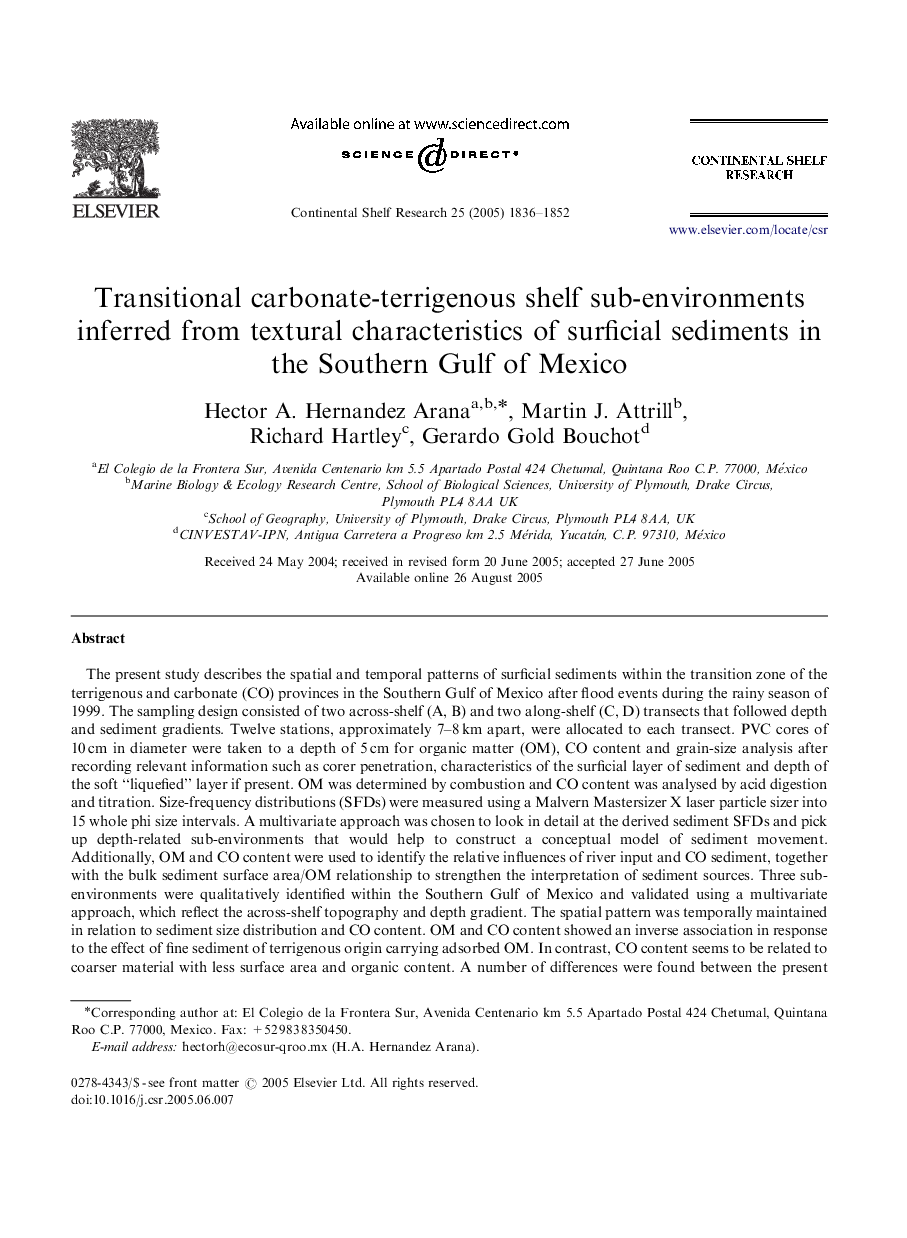| Article ID | Journal | Published Year | Pages | File Type |
|---|---|---|---|---|
| 9479190 | Continental Shelf Research | 2005 | 17 Pages |
Abstract
The present study describes the spatial and temporal patterns of surficial sediments within the transition zone of the terrigenous and carbonate (CO) provinces in the Southern Gulf of Mexico after flood events during the rainy season of 1999. The sampling design consisted of two across-shelf (A, B) and two along-shelf (C, D) transects that followed depth and sediment gradients. Twelve stations, approximately 7-8Â km apart, were allocated to each transect. PVC cores of 10Â cm in diameter were taken to a depth of 5Â cm for organic matter (OM), CO content and grain-size analysis after recording relevant information such as corer penetration, characteristics of the surficial layer of sediment and depth of the soft “liquefied” layer if present. OM was determined by combustion and CO content was analysed by acid digestion and titration. Size-frequency distributions (SFDs) were measured using a Malvern Mastersizer X laser particle sizer into 15 whole phi size intervals. A multivariate approach was chosen to look in detail at the derived sediment SFDs and pick up depth-related sub-environments that would help to construct a conceptual model of sediment movement. Additionally, OM and CO content were used to identify the relative influences of river input and CO sediment, together with the bulk sediment surface area/OM relationship to strengthen the interpretation of sediment sources. Three sub-environments were qualitatively identified within the Southern Gulf of Mexico and validated using a multivariate approach, which reflect the across-shelf topography and depth gradient. The spatial pattern was temporally maintained in relation to sediment size distribution and CO content. OM and CO content showed an inverse association in response to the effect of fine sediment of terrigenous origin carrying adsorbed OM. In contrast, CO content seems to be related to coarser material with less surface area and organic content. A number of differences were found between the present and previous studies carried out on the transitional area of the southern Gulf in relation to sediment size and CO content. It is considered that these differences are mainly the consequence of local hydrology, which makes transitional environments highly variable. As in other CO-siliclastic transitions, climate and hydrological setting are the main controls of the dispersion and deposition of fine materials on the Southern Gulf of Mexico shelf.
Related Topics
Physical Sciences and Engineering
Earth and Planetary Sciences
Geology
Authors
Hector A. Hernandez Arana, Martin J. Attrill, Richard Hartley, Gerardo Gold Bouchot,
